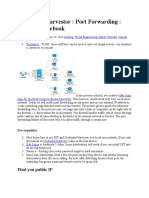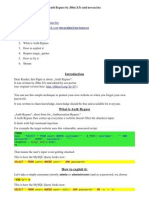100% found this document useful (1 vote)
631 views55 pagesHackBashxAYCEP 2024 Web Hacking Fundamentals
The document discusses various web hacking techniques including cross-site scripting, SQL injection, command injection, and path traversal. It explains how HTTP requests work and how data is retrieved, presented, and delivered in the response. Common attacks like cookie stealing and ways to prevent vulnerabilities are also covered.
Uploaded by
Basil ChinCopyright
© © All Rights Reserved
We take content rights seriously. If you suspect this is your content, claim it here.
Available Formats
Download as PDF, TXT or read online on Scribd
100% found this document useful (1 vote)
631 views55 pagesHackBashxAYCEP 2024 Web Hacking Fundamentals
The document discusses various web hacking techniques including cross-site scripting, SQL injection, command injection, and path traversal. It explains how HTTP requests work and how data is retrieved, presented, and delivered in the response. Common attacks like cookie stealing and ways to prevent vulnerabilities are also covered.
Uploaded by
Basil ChinCopyright
© © All Rights Reserved
We take content rights seriously. If you suspect this is your content, claim it here.
Available Formats
Download as PDF, TXT or read online on Scribd
/ 55





























































































